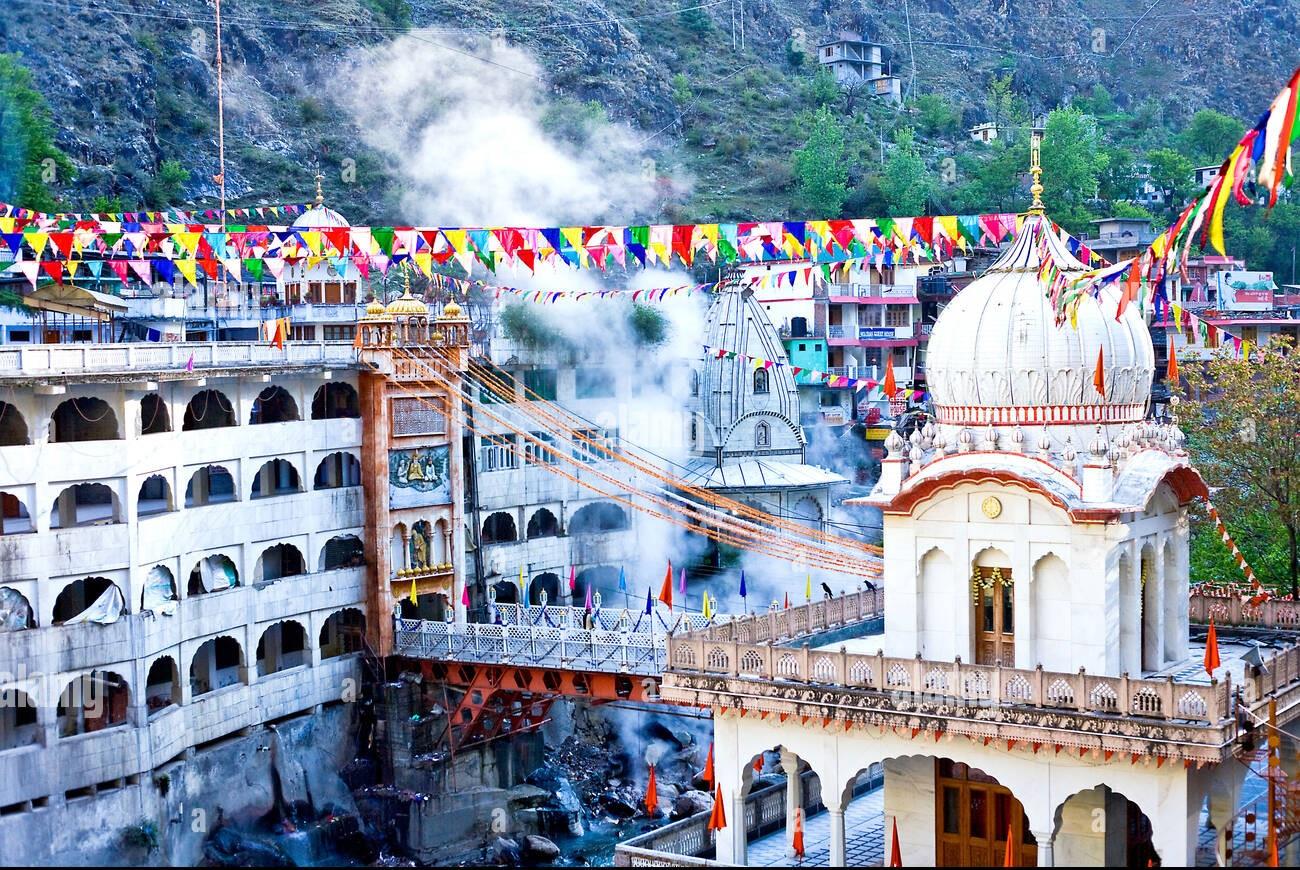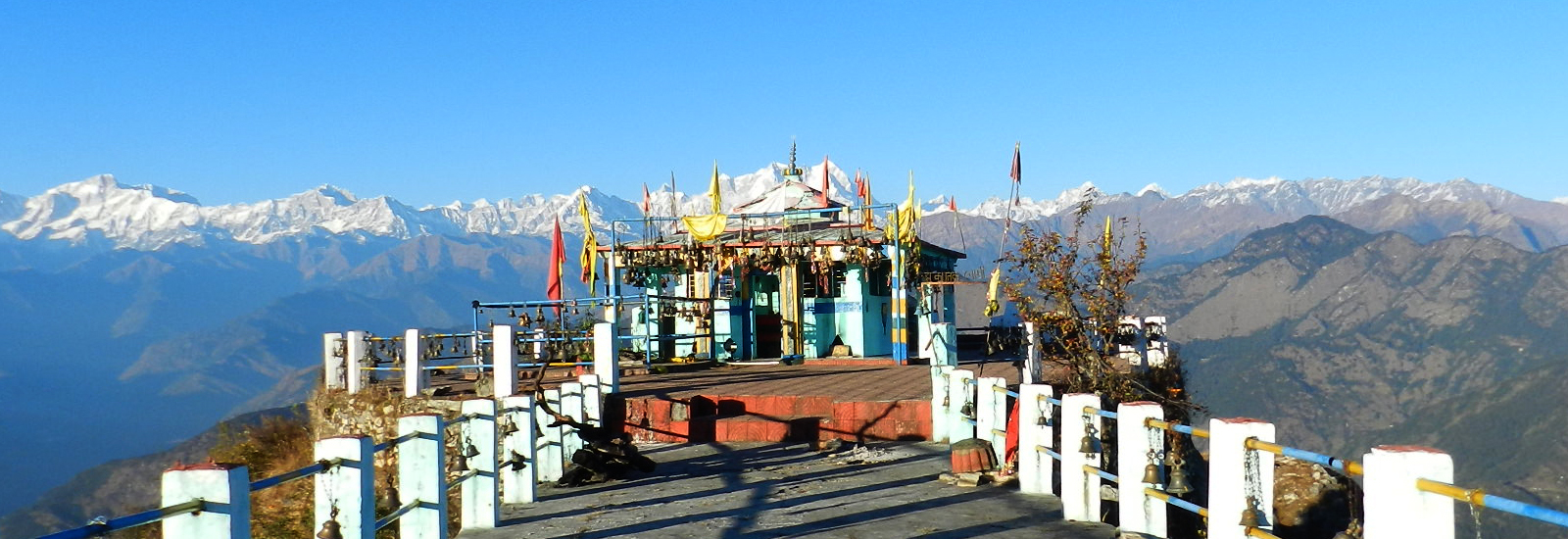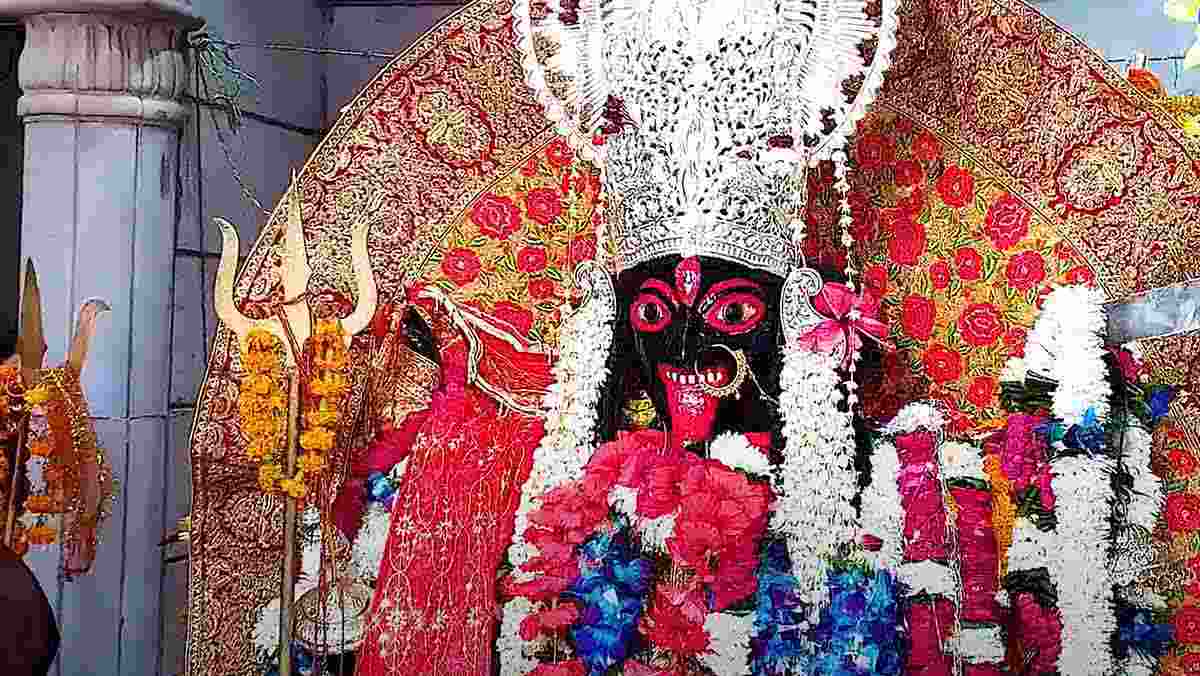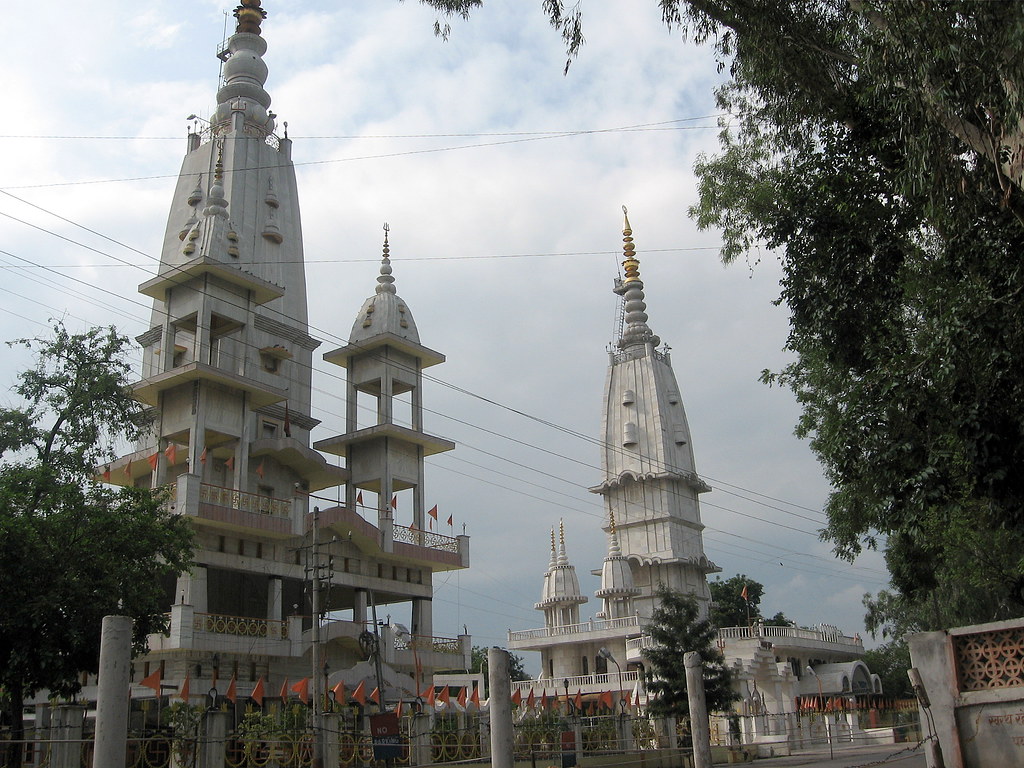
Shri Baba Augharnath Shiv Mandir, also known as the Augharnath Temple or Kali Paltan Mandir, is a historic Hindu temple dedicated to Lord Shiva. It is located in Meerut, a city in the state of Uttar Pradesh, India.

Historical Significance:
- Role in the 1857 Rebellion: The Augharnath Temple is famously associated with India’s First War of Independence in 1857, often referred to as the Sepoy Mutiny or the Indian Rebellion of 1857. It is believed that the temple was a secret meeting place for Indian revolutionaries who planned the uprising against British rule. The location served as a hub for the dissemination of ideas of independence, making it a site of immense historical importance.
- Connection to Local Military: The temple is located near the Meerut Cantonment, an area with a significant military presence, and it is often referred to as the “Kali Paltan Mandir” because of its association with the “Kali Paltan,” or the local battalion of soldiers. Many of these soldiers are said to have worshiped at the temple before joining the rebellion.
- Spiritual Heritage: The temple is also a revered spiritual site. The word “Aghor” or “Aughar” refers to a sect of ascetics in Hinduism who are known for their unconventional practices, often associated with the worship of Lord Shiva. The temple is named after Baba Augharnath, an ascetic who is believed to have been closely associated with the temple.
Architecture and Features:
The temple’s architecture is a blend of traditional Hindu temple designs with influences from the local style. It features a large central shrine dedicated to Lord Shiva, along with other smaller shrines for various deities. The temple is especially crowded during the festivals of Shivratri and Sawan, when devotees from across the region visit to offer prayers.
The Shri Baba Augharnath Shiv Mandir, also known as the Augharnath Temple or Kali Paltan Mandir, is a historic Hindu temple dedicated to Lord Shiva. Located in Meerut, Uttar Pradesh, India, it showcases a unique blend of traditional Hindu temple architecture and local influences. The temple attracts a large number of devotees during the festivals of Shivratri and Sawan.
Location:
The Shri Baba Augharnath Shiv Mandir is located on the Shivaji Road in the Cantonment area of Meerut, Uttar Pradesh, India. The temple is easily accessible from various parts of the city and is a popular religious and tourist destination in Meerut.
This temple not only holds spiritual significance but also stands as a symbol of India’s struggle for independence.
Temple Timings:
The Shri Baba Augharnath Shiv Mandir in Meerut typically follows standard temple timings, although they may vary slightly depending on the season and special occasions. Generally, the temple is open during the following hours:
- Morning: 4:00 AM to 12:00 PM
- Evening: 4:00 PM to 9:00 PM
Special Considerations:
- During major festivals like Mahashivratri and Sawan, the temple may remain open for extended hours, often from early morning until late at night, to accommodate the large number of devotees.
- On Mondays (a day particularly auspicious for Lord Shiva), the temple may also see extended hours and larger crowds.
It’s always a good idea to check locally or contact the temple directly before planning a visit, especially during special occasions or holidays, as timings can vary.
Temple’s History Sources:
To explore the history of Shri Baba Augharnath Shiv Mandir, you can consult a variety of sources that cover different aspects of the temple’s significance, its role in India’s freedom struggle, and its religious importance. Here are some potential sources:
Books and Academic Works:

- “The Great Rebellion of 1857 in India” by Biswamoy Pati:
- This book offers a detailed account of the 1857 Rebellion and mentions key locations like Meerut, where the Augharnath Temple played a role. It provides historical context that can help understand the temple’s significance during the uprising.
- “History of Meerut” by L.S. Negi:
- This book focuses on the history of Meerut, including its religious and cultural landmarks. It is likely to contain information on the Augharnath Temple, especially in the context of the 1857 rebellion.
- “Religious Movements in Uttar Pradesh” by Vishwanath Prasad Verma:
- This book discusses various religious movements and sites in Uttar Pradesh, including those related to Lord Shiva and the Aghori sect, which is associated with the temple.
Historical and cultural journals:
- Journal of Indian History:
- Published by various universities and historical societies, this journal often contains articles about historical events and places in India, including the role of religious sites in historical uprisings like the 1857 rebellion.
- Indian Historical Review:
- Another scholarly journal that might have articles covering the broader historical context of Meerut and the temple’s involvement in the First War of Independence.
Festival & Special Pooja Celebrated:
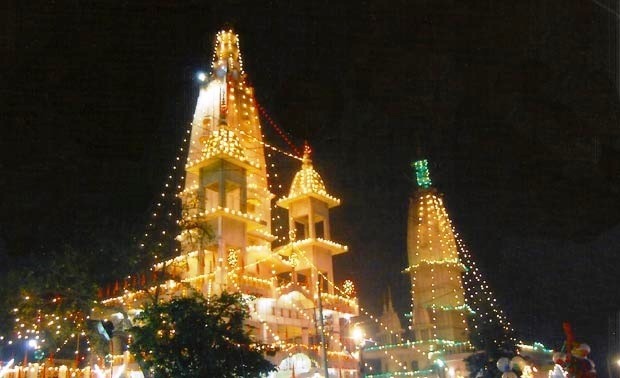
At the Shri Baba Augharnath Shiv Mandir in Meerut, several special poojas and rituals are performed, particularly on auspicious days and during festivals dedicated to Lord Shiva. Here are some of the key pooja’s and their details:
1. Rudrabhishek
- Significance: Rudrabhishek is one of the most revered poojas dedicated to Lord Shiva. It involves the ceremonial bathing of the Shiva Linga with various sacred substances.
- Rituals: The Shiva Linga is bathed with water, milk, honey, ghee, curd, sugar, and sometimes panchamrit (a mixture of milk, curd, honey, ghee, and sugar). Each substance used in the abhishek is believed to have its own spiritual significance. The chanting of Vedic mantras, especially the Rudra Chamakam and Namakam, accompanies the abhishek.
- When Performed: Rudrabhishek can be performed on any day, but it is particularly auspicious on Mondays, during the month of Shravan (Sawan), and on Mahashivratri.
2. Mahashivratri Pooja
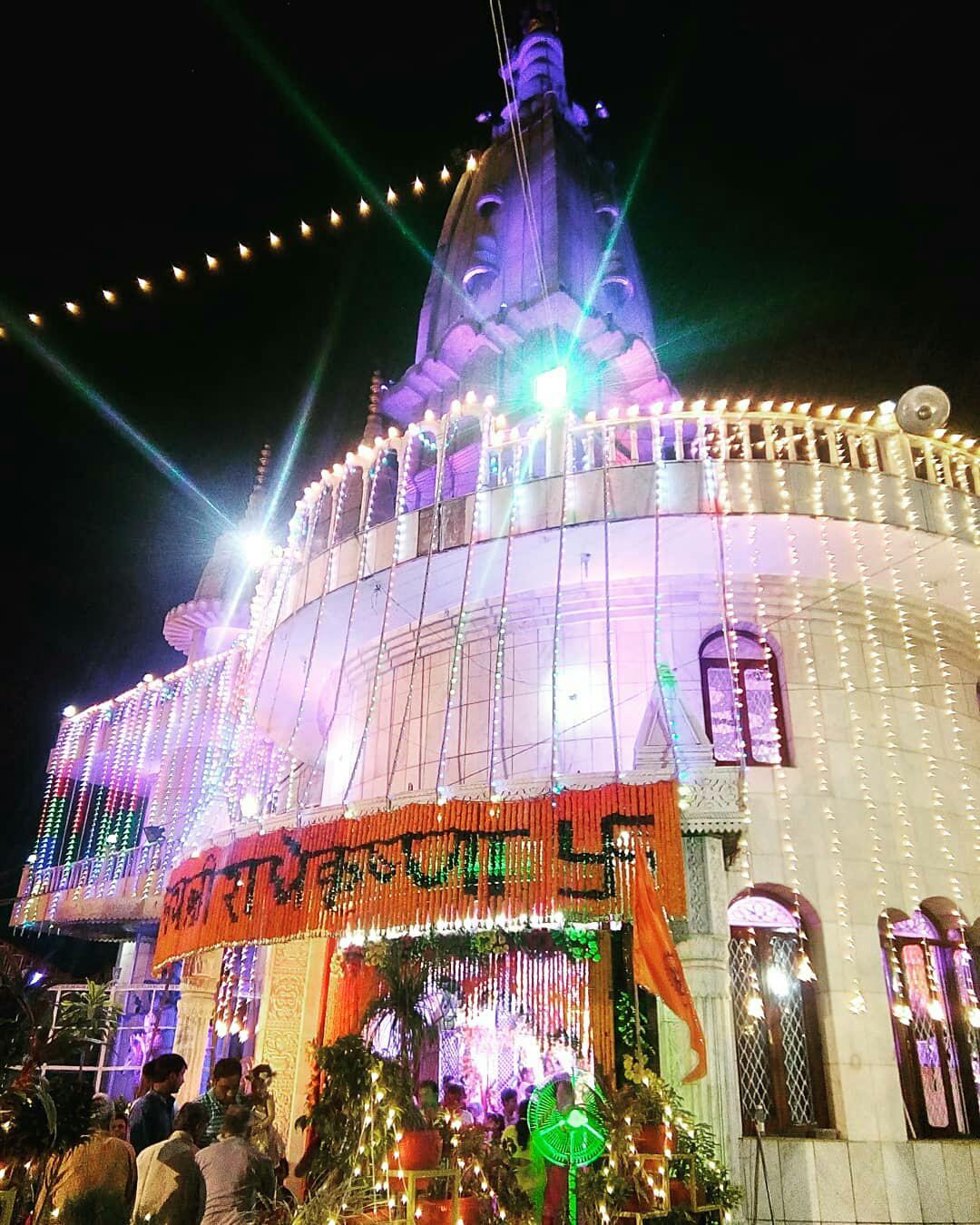
- Significance: Mahashivratri is the most important festival dedicated to Lord Shiva, and the temple sees a massive influx of devotees during this time.
- Rituals: The pooja involves fasting, chanting of Shiva mantras, offering of bilva (bel) leaves, flowers, and other sacred items to the Shiva Linga. The night is divided into four “prahars” (parts), and pooja is performed in each prahar, with special aarti and bhajans. Devotees stay awake all night, participating in the rituals.
- When Performed: Annually on the 14th night of the dark fortnight (Krishna Paksha) in the month of Phalguna (February-March).
3. Shravan Somvar Pooja
- Significance: The month of Shravan (Sawan), which typically falls between July and August, is considered highly auspicious for Lord Shiva worship. Mondays (Somvar) during this month are especially significant.
- Rituals: Devotees perform special poojas every Monday of the Shravan month. This includes abhishek, offering of bel leaves, flowers, and chanting of the Shiva Mahimna Stotra. Many devotees also observe a fast on these Mondays.
- When Performed: Every Monday during the Shravan month.
4. Pradosh Vrat Pooja
- Significance: Pradosh Vrat is observed to seek blessings from Lord Shiva for happiness, health, and prosperity. It is observed on the 13th day of each lunar fortnight (Trayodashi).
- Rituals: The pooja is performed during the evening twilight (Pradosh Kaal). Devotees offer various items like sandalwood paste, flowers, and sacred ash to the Shiva Linga. The pooja is accompanied by the chanting of mantras and prayers.
- When Performed: On the 13th day of each lunar fortnight, known as Pradosh.
5. Aarti and Bhajan Sessions
- Daily Aarti: The temple conducts daily aarti in the morning and evening, which involves the offering of light (usually a lamp) to the deity, accompanied by the singing of devotional songs.
- Special Bhajan Sessions: On special occasions and festivals, the temple organizes bhajan sessions where devotees sing devotional songs dedicated to Lord Shiva.
6. Kanwar Yatra Rituals
- Significance: During the Shravan month, Kanwar Yatra is a major pilgrimage where devotees, known as Kanwariyas, carry water from the Ganges to pour on the Shiva Linga. The Augharnath Temple is one of the significant stops for these pilgrims.
- Rituals: Kanwariyas offer the holy Ganga water to the Shiva Linga, along with other sacred items like bel leaves and flowers. The temple makes special arrangements to accommodate the large number of Kanwariyas during this period.
These special poojas and rituals make the Shri Baba Augharnath Shiv Mandir a vibrant center of devotion, particularly during the auspicious times dedicated to Lord Shiva.
Radha Krishna Temple

The Radha Krishna Temple located within the premises of the Shri Baba Augharnath Shiv Mandir in Meerut is a significant addition to the complex, reflecting the broader Hindu tradition that encompasses the worship of various deities. While the Augharnath Temple is primarily dedicated to Lord Shiva, the inclusion of a Radha Krishna Temple provides devotees with a space to offer prayers to Lord Krishna and Radha, who represent love, devotion, and the eternal bond between the divine and devotees.
Key Features of the Radha Krishna Temple:
- Deity Representation:
- The temple houses beautiful idols of Lord Krishna and Radha, often depicted in a standing posture, symbolizing their divine love and companionship. The idols are adorned with colorful garments, ornaments, and flowers, reflecting the joyful and vibrant nature of their worship.
- Architecture:
- The Radha Krishna Temple within the Augharnath Temple complex typically features traditional Hindu temple architecture. It may include intricate carvings and artistic designs that depict scenes from the life of Krishna, especially those from the Bhagavad Gita and the Bhagavata Purana.
- Rituals and Worship:
- Regular aartis (ritual of light) and bhajans (devotional songs) dedicated to Radha and Krishna are conducted. Devotees often visit this temple to perform poojas, offer flowers, and seek blessings for love, harmony, and spiritual growth.
- Festivals:
- Janmashtami: The birth of Lord Krishna is celebrated with great enthusiasm. The temple sees a large number of devotees who participate in the midnight celebration, which includes the chanting of Krishna’s name, bhajans, and the reenactment of his birth and childhood episodes (Raslila).
- Radhashtami: This festival, celebrating the birth of Radha, is also observed with devotion. Special poojas and rituals are performed, and the temple is beautifully decorated.
- Significance in the Augharnath Complex:
- The presence of the Radha Krishna Temple within the Augharnath Temple complex symbolizes the inclusiveness of Hindu worship, where different deities are venerated in the same sacred space. It allows devotees to engage in the worship of both Lord Shiva and Lord Krishna, fulfilling their spiritual needs in a holistic manner.
Visiting the Temple:
- The Radha Krishna Temple can be visited during the regular hours of the Augharnath Temple. It is especially lively during Krishna-centric festivals but remains a place of devotion throughout the year.
The Radha Krishna Temple within the Augharnath complex adds a dimension of Vaishnavite worship to the predominantly Shaivite setting, making it a spiritually enriching experience for devotees of all traditions.
Maa Durga Temple

The Maa Durga shrine within the Shri Baba Augharnath Shiv Mandir complex in Meerut is another significant aspect of this temple, reflecting the diverse and inclusive nature of Hindu worship. While the Augharnath Temple is primarily dedicated to Lord Shiva, the presence of a shrine for Maa Durga underscores the temple’s role as a comprehensive center of worship, catering to various aspects of the divine feminine energy, or Shakti, which is personified in the form of Maa Durga.
Key Features of the Maa Durga Shrine:
- Deity Representation:
- The shrine houses an idol or a picture of Maa Durga, depicted in her traditional form, usually with ten arms holding various weapons, riding a lion. This form represents her as the powerful and protective mother goddess who vanquishes evil and upholds righteousness (Dharma).
- Architecture and Design:
- The shrine, like other parts of the Augharnath Temple, may feature intricate carvings and artwork that depict scenes from the life and battles of Maa Durga, particularly those from the Devi Mahatmya or Durga Saptashati, which narrates her victory over the demon Mahishasura.
- Rituals and Worship:
- Regular aartis and poojas are conducted at the Maa Durga shrine, with offerings of flowers, fruits, and sweets. Devotees often chant hymns and prayers like the Durga Chalisa and the Devi Stotra to seek her blessings for protection, prosperity, and strength.
- Festivals:
- Navratri: The most significant festival celebrated at the Maa Durga shrine is Navratri, a nine-night festival dedicated to the worship of the nine forms of Durga. During Navratri, the shrine is beautifully decorated, and special poojas and rituals are performed daily. The temple sees a large influx of devotees who participate in fasting, prayers, and the recitation of Durga Saptashati. The final day, known as Vijayadashami or Dussehra, marks the victory of good over evil and is celebrated with great fervor.
- Durga Ashtami: The eighth day of Navratri, known as Durga Ashtami, is particularly important, with elaborate rituals and celebrations. Devotees offer special prayers, and the temple is often the site of a grand aarti and distribution of prasad (blessed food).
- Significance in the Augharnath Complex:
- The Maa Durga shrine within the Augharnath Temple complex allows devotees to experience the worship of Shakti, the divine feminine power, alongside the worship of Shiva, the divine masculine. This reflects the complementary nature of these deities in Hindu theology, where both aspects of divinity are revered together for a balanced spiritual life.
- Special Rituals:
- Kanya Poojan: During Navratri, the temple often conducts Kanya Poojan, a ritual where young girls, considered manifestations of the goddess, are worshiped and offered food, gifts, and blessings.
- Chandi Path: Recitation of the Chandi Path, a powerful set of verses dedicated to Maa Durga, is often organized, especially during Navratri, to invoke her blessings for health, protection, and prosperity.
Visiting the Shrine:
- The Maa Durga shrine is accessible to devotees during the regular hours of the Augharnath Temple. It is particularly vibrant during Navratri and other festivals associated with the goddess.
The inclusion of Maa Durga’s shrine in the Augharnath Temple complex enriches the spiritual experience for devotees, allowing them to connect with the powerful and compassionate energy of the divine mother while visiting this historic and sacred site.


